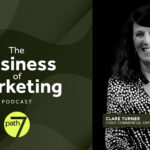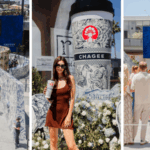By Adam Milano, Head of Branded Entertainment at SuperBloom
Season 3 of The White Lotus premiered on February 16, and there’s something irresistible about watching the rich and beautiful unravel in breathtaking locations—travel chaos we’d never want for ourselves, yet can’t look away from. It’s luxury with a side of danger, best experienced from the safety of our couch.
The show lit the fuse for a wave of travel-gone-wrong storytelling, from Triangle of Sadness and Saltburn to Death and Other Details, Nine Perfect Strangers, A Haunting in Venice, Glass Onion, The Menu—all tales where paradise is anything but.
It’s also had a major impact on travel and tourism marketing. After Season 1, bookings at Hawaii’s Four Seasons surged; Season 2 did the same for Sicily’s San Domenico Palace. But this pull toward chaotic luxury extends far beyond The White Lotus—fans are flocking to the Saltburn mansion, using Yellowstone as a ranch vacation guide, and indulging in the Emily in Paris effect. Travel and entertainment are merging, with 58% of travelers now booking trips inspired by movies and TV—a phenomenon Expedia calls set-jetting. It proves how entertainment rewires consumer behavior, turning chaos into currency.
So as a new season of White Lotus takes flight, it’s worth asking: why are we so obsessed with vacations filled with drama, dysfunction, mystery, and even disaster? And what does this mean for travel marketers?
From Wanderlust to Wanderchaos
Travel used to be about exploration—new lands, cultures, and experiences. Today, it’s about living vicariously, even as entertainment has swapped dreamy escapism for tension-filled tales.
Brands tapping into chaos and crisis isn’t new, it’s a proven strategy. Mountain Dew has long aligned itself with extreme sports and high-adrenaline adventures, while Bear Grylls has partnered with brands like RealTruck to embody survival and resilience.
Scripted entertainment like The White Lotus and Saltburn open up opportunities for a different type of brands across the travel industry.
Social Media Is Driving Travelers Away from the Familiar
Social media is partly to blame for this hunger for travel drama. When every destination starts to feel overexposed (yet another influencer twirling in Santorini’s blue domes) we begin to crave the messy, the unexpected, the dangerous. Chaos sticks with us far longer than another picture-perfect sunset.
For online travel platforms like TripAdvisor, the messy (AKA, real) side of travel is striking a chord with younger audiences, especially on social media. Moving beyond the “Top 10 Places to Visit,” the brand is now spotlighting the unexpected by highlighting review hot takes to drive conversation.
Brands Are Betting on Destination Drama
The worst trips make the best stories, and marketers are finally catching on.
Brands like Away and American Express have already leaned into the success of HBO’s White Lotus.
Norwegian Cruise Line still offers a Game of Thrones superfan cruise to Croatia, guiding travelers through the fictional—yet somehow real—Seven Kingdoms.
And it’s no secret that Yellowstone has turned Montana into a thirst trap for swoony travelers searching for their Rip to Beth, generating over $730 million in state revenue. Brands are flocking to the franchise too, with Wrangler and Carhartt riding a resurgence in relevance, culture, and sales. Yellowstone has become the Trojan horse for revitalizing iconic American brands.
Travel Storytelling in 2025
This shift opens up new creative opportunities. A brand could back a White Lotus-style series, leaning into the unpredictability of travel, celebrating the joy of rolling with the punches. The challenge is balancing the chaos audiences crave with the trust they demand.
Moving forward, expect that luxury and travel brands will embrace this kind of narrative-driven content, leaning into marketing campaigns that focus on adventure, unpredictability, and the drama of imperfection.
The Ritz-Carlton is already doing so. Late Checkout is a highly cinematic short film starring Josh Hutcherson and created with Madrid-based fashion house Late Checkout. The story follows a family who departs their stay better than they arrived, blending luxury, transformation, and a touch of travel’s inevitable chaos. The message? It’s not about perfection—it’s about depth.
The takeaway is simple: embrace imperfection, craft better stories, and watch audiences book the ride. Travelers aren’t looking for perfect vacations. They’re looking for unforgettable ones.
In this age of wanderchaos, it’s the tension that keeps us coming back for more.







